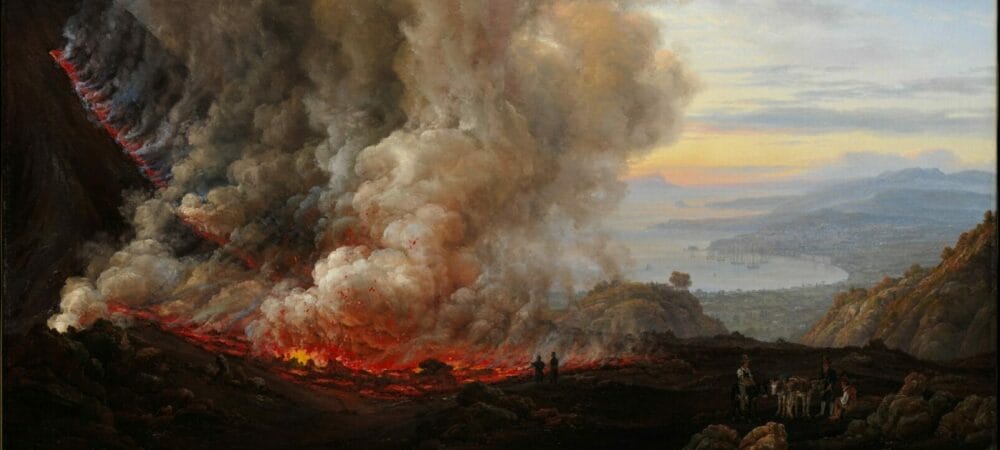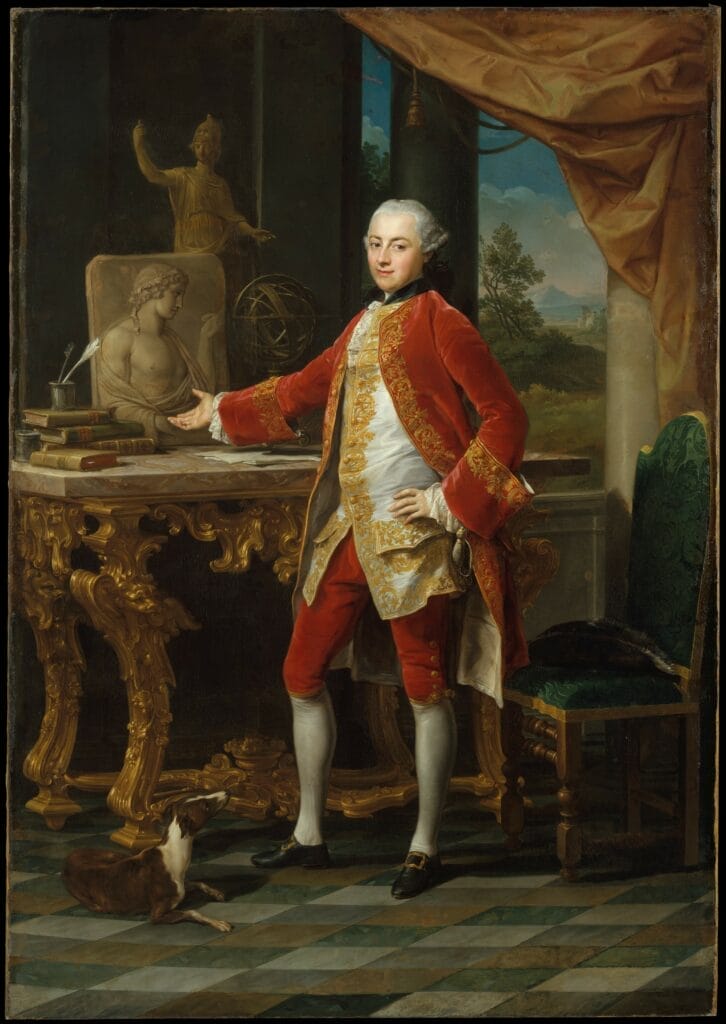Domenico Del Fratte & Vincenzo Feoli
Bacchante carrying a dish and a bucket
Domenico Del Fratte & Vincenzo Feoli
Bacchante carrying a dish
Date : around 1795 - 1820
Dimensions du feuillet : H : 50 cm ; L : 37 cm
Dimensions au coup de planche : H : 34 cm ; L : 25 cm
place of production: Rome (Italie)
Material : Vergé paper
Condition : Good condition – wides margins – restored
References : Similar prints held by the Metropolitan Museum of Art, New York, the British Museum and the Victoria & Albert Museum, London.
Conditions & disponibilité: Available - framed with a black satin-finished wooden molding - mounted with white conservation-grade mat board, mat with a beveled edge - UV-protective synthetic glass.
450 €
Description
of work
PRINT DEPICTING, SURROUNDED BY A FRIEZE, A BACCHANTE WITH HER RIGHT BREAST UNCOVERED, CARRYING A DISH IN HER RIGHT HAND AND A BUCKET IN HER LEFT. HER HAIR IS ADORNED WITH A HEADDRESS. BEARS THE INSCRIPTION: BACCANTE DELL ERCOLANO IN ROMA PRESSO AGAPITO FRANZETTI AL.CORSO DOMENICO DEL FRATTE DEL(INEAVIT). VINCENZO FEOLI INC.
This chisel engraving, published by Agapito Franzetti in Rome, was engraved by the burinist Vincenzo Feoli after a drawing by the painter and draughtsman Domenico Del Frate.
This print, number 3, is part of a series depicting the dancers of Pompeii. These dancers or bacchantes were originally depicted in frescoes decorating a villa in Pompeii, not in Herculaneum, as the inscription Baccante dell Ercolano might suggest. Ercolano refers to the gateway to Herculaneum, the Pompeian site of the villa known as Cicero’s, where the frescoes adorned the walls. These frescoes became famous when they were discovered in Pompeii during the excavation of the Villa of Cicero in 1759, and are now housed in the National Archaeological Museum in Naples.
This burin engraving depicts a bacchante or maenad serving in the triclinium.
It is a classic figure from the ancient period, widely revived in the neoclassical 18th century.
"We would learn more about the domestic history of the Roman people and the state of civilisation from a few walks through restored Pompeii than from reading all the works of antiquity.." Chateaubriand - Voyage en Italie

Domenico Del Fratte & Vincenzo Feoli
Lucques ( Italie ) 1765 - Rome ( Italie ) 1821
Born in Lucca (Italy) on 15 June 1765, Domenico Del Frate was a renowned draughtsman, a sought-after fresco artist and a man appreciated by his contemporaries.
His father, Santi Del Frate, a painter and academy director, introduced him to the world of the artists of his time. He trained and worked successively with Bernardi Nocchi and Angelika Kauffmann, both important painters. Around 1795, Domenico Del Frate joined Antonio Canova’s inner circle. An immense artist known for works such as Psyche Revived by Love’s Kiss in the Louvre and Theseus on the Minotaur in the Victoria and Albert Museum in London, Antonio Canova had surrounded himself with a group of painters, sculptors, engravers and architects with whom he worked.
In 1804, Domenico del Frate was commissioned by Antonio Canova to install his Perseus in Poland, acquired by Count and Countess Tarnowski for their Dzików Castle. They themselves were clients of Domenico del Frate, who managed Canova’s affairs on behalf of these wealthy patrons.
In addition to the foreign assignments that Canova entrusted to his friend, Domenico Del Frate was also one of the great sculptor’s regular draughtsmen. Indeed, Canova was a great consumer of drawings and engravings of his own sculptures and projects, which he passed on to his clients to keep them waiting or informed of the progress of their commissions. Domenico Del Frate, appreciated for his ability to draw on antique models, was frequently asked to produce these drawings.
Del Frate also collaborated with many of the great artists of his time, including Raphael Morghen, Giovanni Volpato and Pietro Fontana, to produce catalogues and engravings. These works were intended in particular for wealthy European travellers on their Grand Tour.
In 1813, Domenico Del Frate was elected to the Accademia di San Luca in Rome, of which Canova was director. He was also appointed to the chair of disegno figurativo in 1821, a few months before his death. From 1815 onwards, Domenico del Frate became a prominent artist, sought after in particular for his fresco skills. He worked for such illustrious figures of his time as Prince Torlonia, Pope Pius VII and the Spanish queen Marie-Louise de Bourbon.
Vincenzo Feoli
Rome ( Italie ) vers 1750 - Rome ( Italie ) 1831
Vincenzo Feoli was a skilled burinist whose mastery and the quality of the illustrations he produced were appreciated by his contemporaries. Vincenzo Feoli produced numerous architectural and archaeological engravings. In particular, he collaborated with famous architects such as Giuseppe Valadier and the Frenchman Antoine Desgodets, with whom he helped produce a collection of his drawings: The Ancient Buildings of Rome, drawn and measured with the utmost precision. This work was a great success, leading to it being republished and translated into several languages.
the work
in its context
The 18th century saw the rediscovery of Pompeii and Herculaneum, ancient Roman cities destroyed by the eruption of Mount Vesuvius in 79 AD. These excavations were the first major archaeological digs in the Western world, and had a major impact on the European aesthetic of the time.
Encouraged by the Grand Tour, an interest in Antiquity and its particular aesthetics spread throughout Europe. The Grand Tour consisted of young English, French and Prussian aristocrats visiting the remains of ancient civilisations in Europe during their formative years, particularly in Italy and Greece.
At the same time, a new artistic movement, neoclassicism, was developing in the West. Both a reaction to the Baroque and Rococo styles and an expression of the currents of thought nourished by the philosophy of the Enlightenment, Neo-Classicism manifested a desire to return to the sources of art, whose origins were thought to be ancient.

Architecture, painting and then sculpture were theorised and became vehicles for expressing the virtues attributed to Greek democracy and the Roman republic. The “enlightened” elites and rulers, including monarchs, were seduced and convinced by these ideas, and played an active part in spreading this aesthetic. For example, the future King Charles III of Spain had an engraved collection Le pitture antiche d’Ercolano e contorni incise con qualche spiegazione (The ancient paintings of Herculaneum and the engraved contours with some explanations) distributed in the West, in which we can admire our bacchantes drawn by Camillo Paderni and engraved by Filippo Morghen.

sources
Le pitture antiche d’Ercolano e contorni incise con qualche spiegazione (https://archive.org/details/A216167/)
Lenormant, François (1837-1883). Chefs
d’oeuvre de l’art antique. 2e série, Monuments de la peinture et
de la sculpture. Tome 3 / 1867-1868.
- Metropolitan Museum de New York, USA – (https://www.metmuseum.org/art/collection/search/669050)
- British Museum, Londres, Royaume-Uni – print | British Museum
- Musei Civici di Monza, Monza, Italie – Baccante dell’Ercolano, Del Frate Domenico; Feoli Vincenzo – Stampe e incisioni – Lombardia Beni Culturali







